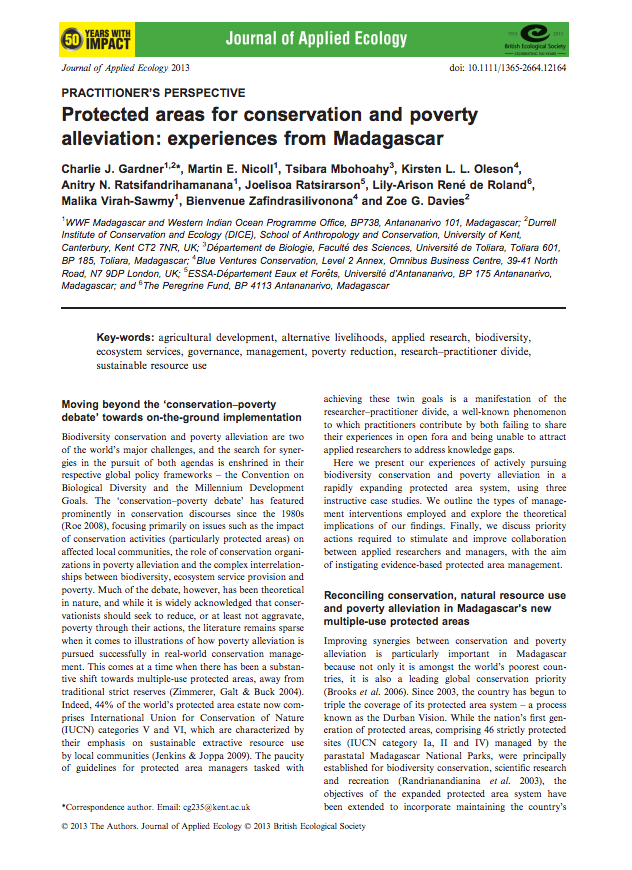Extract
Biodiversity conservation and poverty alleviation are two of the world’s major challenges, and the search for synergies in the pursuit of both agendas is enshrined in their respective global policy frameworks – the Convention on Biological Diversity and the Millennium Development Goals. The ‘conservation–poverty debate’ has featured prominently in conservation discourses since the 1980s (Roe 2008), focusing primarily on issues such as the impact of conservation activities (particularly protected areas) on affected local communities, the role of conservation organizations in poverty alleviation and the complex interrelationships between biodiversity, ecosystem service provision and poverty. Much of the debate, however, has been theoretical in nature, and while it is widely acknowledged that conservationists should seek to reduce, or at least not aggravate, poverty through their actions, the literature remains sparse when it comes to illustrations of how poverty alleviation is pursued successfully in real-world conservation management. This comes at a time when there has been a substantive shift towards multiple-use protected areas, away from traditional strict reserves (Zimmerer, Galt & Buck 2004). Indeed, 44% of the world’s protected area estate now comprises International Union for Conservation of Nature (IUCN) categories V and VI, which are characterized by their emphasis on sustainable extractive resource use by local communities (Jenkins & Joppa 2009). The paucity of guidelines for protected area managers tasked with achieving these twin goals is a manifestation of the researcher–practitioner divide, a well-known phenomenon to which practitioners contribute by both failing to share their experiences in open fora and being unable to attract applied researchers to address knowledge gaps.
Here we present our experiences of actively pursuing biodiversity conservation and poverty alleviation in a rapidly expanding protected area system, using three instructive case studies. We outline the types of management interventions employed and explore the theoretical implications of our findings. Finally, we discuss priority actions required to stimulate and improve collaboration between applied researchers and managers, with the aim of instigating evidence-based protected area management.

















